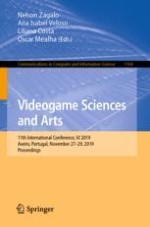2019 | OriginalPaper | Buchkapitel
Games Within Games
The Two (or More) Fictional Levels of Video Games
verfasst von : Regina Seiwald
Erschienen in: Videogame Sciences and Arts
Aktivieren Sie unsere intelligente Suche, um passende Fachinhalte oder Patente zu finden.
Wählen Sie Textabschnitte aus um mit Künstlicher Intelligenz passenden Patente zu finden. powered by
Markieren Sie Textabschnitte, um KI-gestützt weitere passende Inhalte zu finden. powered by
